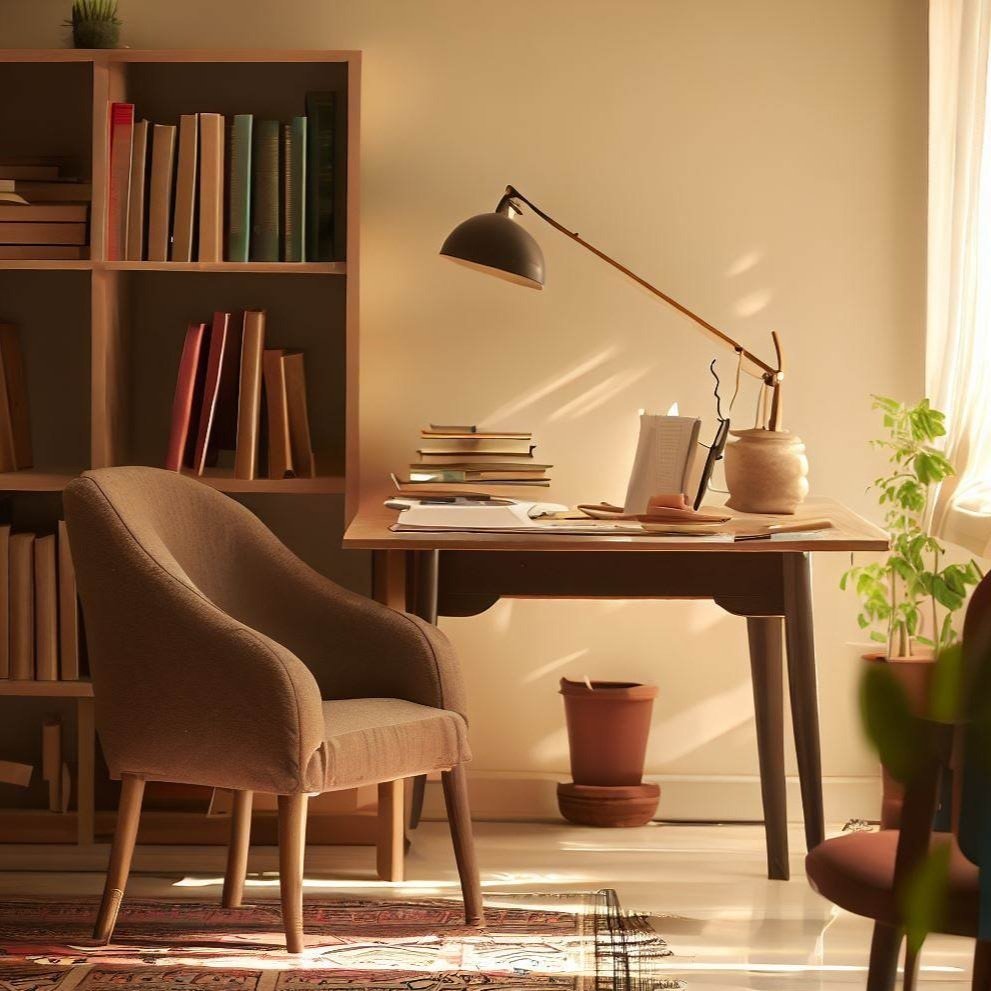Enhancing Learning Spaces: The Impact of Interior Design on Academic Performance
Discover how interior design can enhance learning spaces and improve academic performance. Explore tips and strategies for creating effective educational environments.
How learning spaces are designed exceptionally affects how children learn and excel academically. Interior design features such as furniture placement, color choices, lighting solutions, and material choices can significantly influence pupil focus, motivation, and overall mood. These factors all majorly affect how well pupils focus, are motivated, and feel. This article highlights how interior design may enhance learning environments to boost student achievement.
Ergonomics
A key component of successful learning environments is ergonomics - the study of designing rooms around users' requirements. Effective ergonomic design may reduce weariness and physical pain, helping pupils focus better in class. A pleasant study environment must include seats and desks that can be adjusted to promote proper posture - when students feel physically at ease, they're more likely to concentrate on their work without physical discomfort. In case you need additional help with academics, read reliable reviews on essayservices.review.
Lighting Options: Natural and Artificial
Lighting is another crucial element of learning room design. Studies have revealed the positive benefits of natural light exposure on mood, energy levels, and cognitive function for students in classrooms with ample windows and skylights, providing natural illumination that improves attentiveness while decreasing eye strain. When natural lighting is limited or unavailable, thoughtfully planned artificial lighting may create an ideal learning environment; for instance, LEDs with adjustable color temperature and intensity levels can help sustain students' concentration and productivity throughout the day by simulating natural lighting conditions.
Color Psychology in Learning Spaces
Color can immensely influence how students feel and behave, making color selection for various sections of a learning space particularly crucial. Color can energize, soothe, or inspire - soothing blue and green tones are perfect for schools where students need to concentrate and relax, while vibrant hues such as orange and yellow could stimulate energy and creativity in art rooms or collaborative areas. Educators and designers can create spaces that improve student learning outcomes by applying color psychology principles.
Flexible and Adaptable Furniture
Furniture that is both flexible and adaptable allows teachers to quickly adapt learning environments to suit a range of teaching techniques and activities. Modular seating, folding tables, movable desks, and chairs enable teachers to rearrange classroom seating for individual or group work and whole-class instruction with minimal disruption to the class experience. Such adaptability fosters more engaging educational experiences by supporting an array of learning activities and styles - creating an empowering learning experience in which students feel more in charge of their education through being given freedom in selecting or changing their learning environments in line with their requirements.
Acoustics and Noise Control Solutions
Noise pollution can have an enormous effect on children's ability to concentrate and absorb knowledge, increasing stress levels and negatively affecting academic performance. Sound-absorbing materials and careful wall and barrier layout are two effective acoustic design techniques that can reduce distracting background noise; creating an ideal learning environment by installing wall panels, carpeted flooring, and acoustic ceiling tiles will reduce reverberation noise levels further, which in turn allows students to become better-focused learners that actively engage with classes by controlling the acoustics in schools.
Integrating Nature: Biophilic Design
Biophilic design - incorporating natural elements into indoor environments - has boosted well-being and cognitive performance. A relaxing and healing atmosphere may be created using elements like indoor plants, green walls, and organic materials like wood and stone; spending time outdoors has been linked with stress reduction, mood enhancement, and increased creativity. Schools can create learning environments using biophilic design concepts that support their student's mental and emotional wellness and improve academic achievement.
Integration of Technology
Technology integration is of utmost importance in today's digital era, providing customized and dynamic learning environments through interactive whiteboards, tablets, and other electronic devices in classrooms. To prevent clutter and ensure the usability of this tech-friendly learning space, furniture that can accommodate various devices while charging stations is a must if this solution is desired - incorporating tech correctly can enhance learning without becoming a distraction or disruption for both learners and instructors.
Establishing Collaborative Spaces
Students are encouraged to collaborate and communicate in collaborative learning environments, which provide spaces designed to foster peer-to-peer learning, group projects, conversations, and collaboration between classmates. Collaboration and exchanging ideas may be enabled with big tables, comfortable chairs, and writing surfaces like glass walls or whiteboards; creating such areas may develop a sense of community while honing communication and problem-solving skills essential for classroom and workforce success. If you look for a professional writing assistant, check out mypaperhelp.com review.
Personal Learning Environments
Personalized learning settings provide students with spaces to meet their requirements and preferences. This method recognizes that every learner has individual preferences regarding their learning preferences, areas of strength, and development opportunities. Interior design promotes personalized learning byby offering seating arrangements, study spaces, resource rooms, and cozy reading nooks or breakout spaces that support different forms of activity, such as group work. Access to spaces explicitly tailored towards your students can keep them engaged while remaining motivated - thus keeping motivation high!
Promoting Mental and Emotional Well-Being
The design of learning environments is also critical in supporting students' mental and emotional well-being. Calm, welcoming spaces can reduce anxiety while encouraging optimism; sufficient lighting, cozy seats, and natural features may all create an atmosphere conducive to relaxation and optimism. Locations that promote mobility, such as open spaces for stretching or standing desks, may also help alleviate stress management while supporting physical wellness; students can better concentrate on their studies when their emotional and psychological well-being are balanced, allowing for improved academic success.
Designing for Inclusivity
Thanks to inclusive design, all students may access learning environments regardless of physical limitations or learning styles. This strategy involves breaking down boundaries and designing spaces that accommodate various requirements and tastes; students with impairments or sensory sensitivities are supported with features like adjustable desks, wheelchair ramps, sensory-friendly features, easy navigation via clearly marked routes and user-friendly architecture. Schools can create learning environments where all pupils feel valued by prioritizing inclusion when designing educational environments.
Conclusion
The interior design of learning environments is an influential force on student well-being and academic achievement. Schools may create spaces that foster learning by placing high priority on ergonomics, lighting, color, flexibility, acoustics, nature, technology, cooperation customization, and well-being - not only will this lead to improved learning outcomes, but it can create supportive environments where kids may flourish further enhancing learning outcomes with purposeful designs enhancing learning outcomes as well. Interior design will continue to play an essential role as educational institutions adapt.



